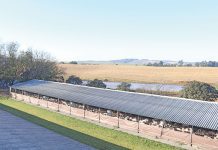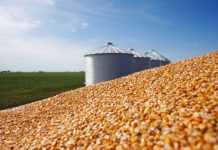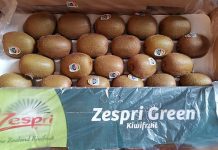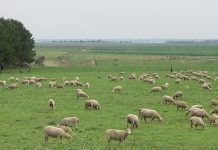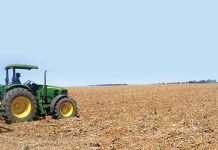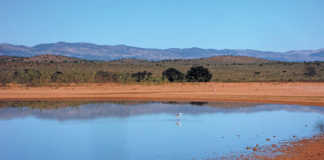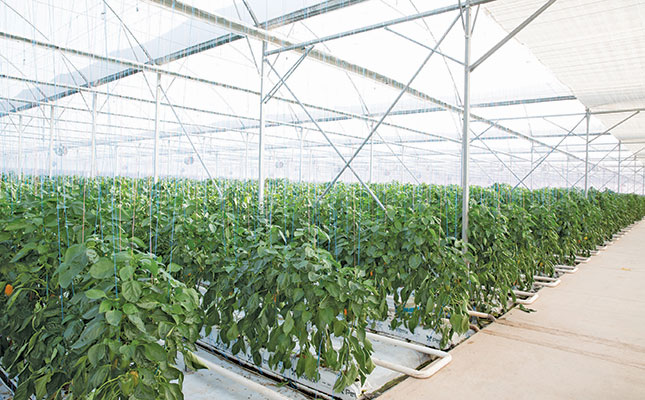
Photo: Netafim South Africa
A quick look at ‘irrigation systems’ on the Internet reveals a bewildering array of options. They include the older technologies, the latest ones, and others under development that promise to be even more advanced than their predecessors or competitors.
Chris Barnard, a farmer and part-time agronomist at irrigation technologies manufacturing company Agriplas, cautions that before an undercover cropping operation invests in a new irrigation system or upgrades its existing system, its owners should carefully consider what the business hopes to achieve.
“With the focus being on the latest technologies for cultivating undercover crops, the basic principles for ensuring the long-term sustainability of an undercover operation are often forgotten. Hands-on management should never be substituted by automated equipment.”
The growth medium
Barnard says that efforts to maximise water-use efficiency will fail from the start if the irrigation system is not appropriate for the growing medium or substrate, such as peat moss, bark or perlite.
This is especially so given that undercover crop production is highly intensive and makes use of small plant containers or bags.
Each container and its growing medium has limited water-holding capacity; generally, the smaller the container, the more often the water in the medium has to be replenished.
To prevent over- or under-irrigation, the frequency and volume of each irrigation must be adjusted for the crop type, the size of the containers, and the characteristics of the growing medium.
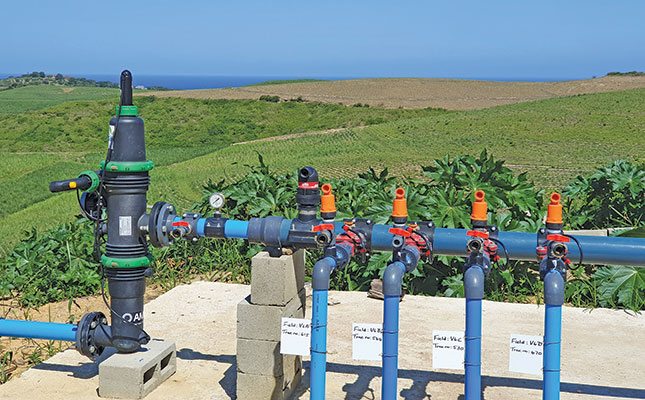
“Irrigation water must be applied in such a way as to create a balance between the water and oxygen in the substrate. This will ensure that the plant’s oxygen-absorbing and feeder roots can develop in specific areas within the substrate,” says Barnard.
To determine whether or not the undercover crop is being over-irrigated, the grower should measure the volume of water that runs out the bottom of a plant container or bag and compare it with the volume of irrigation water applied.
Excessive run-off could indicate that too much water is being applied and the plant’s roots are at risk of becoming waterlogged.
However, the degree of run-off may not be telling the whole story. Barnard points out that the quality and water-holding characteristics of a growing medium deteriorate over time.
This can result in compaction of the medium, leading to less water run-off and waterlogging of the growing medium and roots.
If, in this case, the farmer or manager calculates the irrigation requirements simply by monitoring water run-off from a container, he or she may end up over-irrigating the plants.
“The producer must regularly inspect some of the bags or containers by opening them to assess the water content and level of deterioration of the growing substrate,” explains Barnard.
“In undercover cropping operations where automated measuring of electrical conductivity within the growing substrate is not available, the producer should closely examine the different depths within a plant bag or container. This proactive approach will ensure a sound knowledge of the water and nutrient status of the substrate, especially before the crop’s important phenological [physical] growth stages.”
Plan to the entire system
Willem Botha, marketing manager of irrigation solutions company Netafim South Africa, says the technologies available for undercover crop production are already highly advanced and will become increasingly more so.
The diversity of this equipment, used for irrigation, nutrigation, climate control and infrastructure, can cause technical and efficiency problems for a cropping operation if each system is installed independently of the others.
“Planning is very important to achieve a successful undercover farming project and it’s equally important that this planning be done holistically. Irrigation planning is only one part of the bigger picture. It’s essential to get the experts involved in all the systems to sit around the same table to ensure that the different technologies can accommodate one another and work in sync to achieve high-precision undercover crop production.”
Botha cites the hypothetical example of planning an entire irrigation system down to the finest detail and installing it, only to find it cannot handle the fertilisation programme proposed by the crop nutritionists.
In this case, both the irrigation and fertilisation technologies will fail.
He adds that the main requirement is for equipment that ensures precise irrigation at the root zone of the plants, and applies an exact amount of nutrients to the plants.
“A crop grown in a soilless medium requires accurate, pulsed irrigation with consistent water quantity and nutrient content, delivered uniformly throughout the greenhouse.
“Undercover irrigation is applied using drippers, overhead micro-sprinklers, or overhead misting. An example of such equipment is arrow drippers, connected by micro-tubes to online drippers to ensure that water is delivered directly to a plant’s root zone.”
Other technologies he believes are crucial for irrigating, feeding and protecting undercover crops are high-end dosing systems capable of ensuring precise nutrigation, and micro-emitters for controlling the interior climate efficiently and reducing the threat of frost.
Automated irrigation
According to Deon van Rooyen, sales manager at undercover growing solutions company Vegtech, key factors to consider before settling on irrigation and other technologies are the water, substrate and electricity requirements; the needs of the particular crops; and the impact of climatic conditions on the functioning of these technologies and the productivity of the crops.
“The more that you have to change the ambient climate to suit a plant’s needs, the more expensive your greenhouse system becomes. It, therefore, makes sense to grow crops in areas where minimal changes are needed to the ambient climate to meet the plants’ requirements.”
Van Rooyen says that in increasingly advanced undercover crop production operations, where technological automation is becoming ever greater, fit-for-purpose computerised controllers are essential.
In his view, the capabilities of current greenhouse controllers lag behind the complex technologies they are meant to integrate and operate.
And while a mid-range controller may be suitable for managing, say, an undercover blueberry-growing operation, sophisticated controllers are required to manage the production of crops such as medicinal cannabis.
“One of the most important aspects of good irrigation controllers is the planning and back-up support service offered by the company that manufactures or sells these products,” says Van Rooyen.
Email Chris Barnard at [email protected], or visit agriplas.co.za;
Email Willem Botha at [email protected], or visit netafim.co.za;
Email Deon van Rooyen at [email protected], or visit vegtech.co.za.

